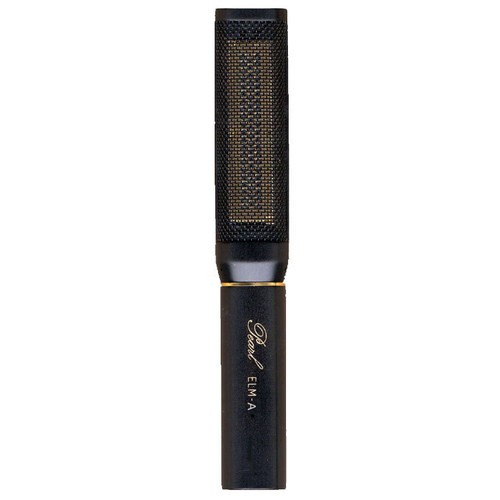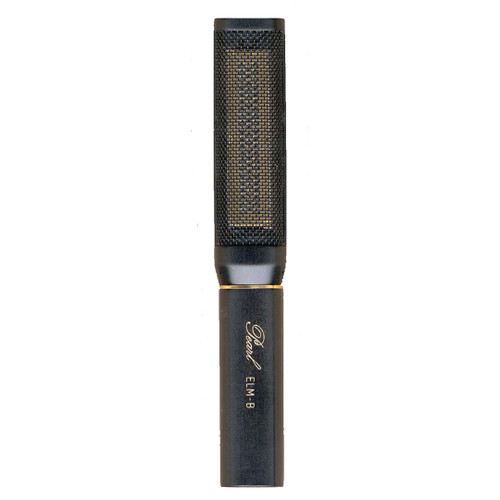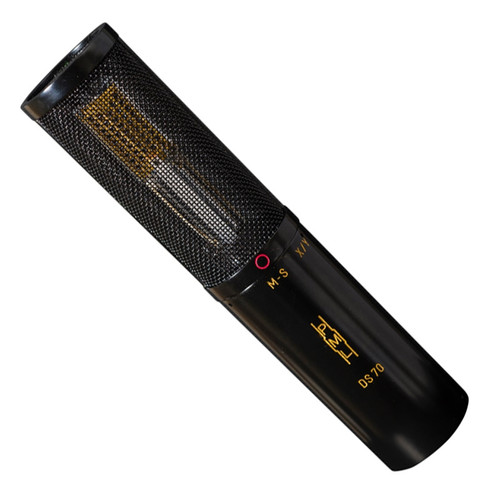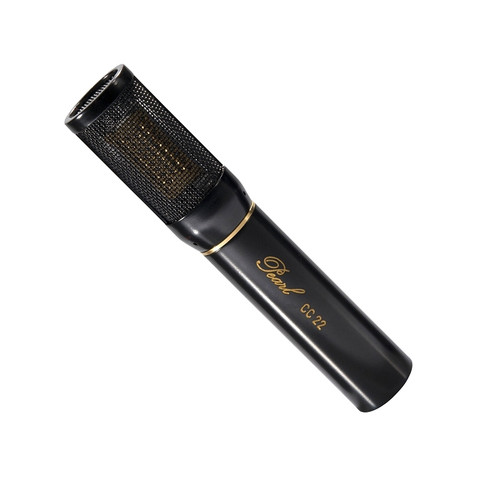The Pearl Microphones ELM-A Microphone provides an extremely unique 2-channel output solution for specific recording situations. With Pearl's unique rectangular capsule and multi-pattern polar characteristics makes for a truly unique and stellar sounding microphone.
The Pearl Microphones ELM-A Microphone's linear capsule has more than twice the surface area of large-diameter round capsules. This gives excellent signal-to-noise ratio and a near resonance-free frequency response. The Pearl Microphones ELM-A's speciality is its polar pattern that is a normal cardioid horizontally and much narrower vertically. The Pearl Microphones ELM-A Microphone has two separate outputs via a 5 pin XLR connector. Both outputs deliver independent cardioids, one from each membrane of the dual membrane capsule, i.e. "Back to Back" output or 180 degrees stereo. Both sides can be used simultaneously or independently. When the Pearl Microphones ELM-A Microphone is connected to two inputs at the console/DAW, an omni, figure-of-eight or cardioid pattern can be obtained by using the pan pots and phase shifting of one channel.
The Pearl Microphones ELM-A Microphone is finished in piano black ED lacquer with a white logo, ring and engraved model number.
Pearl Microphones ELM-A Microphone Features
- Extremely unique 2-channel output solution for specific recording situations
- Two separate outputs via a 5 pin XLR connector
- Pearl's unique rectangular capsule
- Excellent signal-to-noise ratio
- Near resonance-free frequency response
- Finished in piano black ED lacquer
- White logo, ring and engraved model number
Pearl Microphones ELM-A Microphone Specifications
- Polar Pattern: Cardioid, Omni, Figure-of-eight
- Sensitivity: 22mV/Pa
- Frequency Response: 20Hz - 25kHz
- Impedance: 100 ohms
- Operating Voltage: 48 volts
- Rec. Load Imp: 1k ohms
- Current Consumption: 3.5 mA
- Self Noise: 11 dBA
- Max SPL: 126 dB
- Connector: 5-pin XLR
- Dimensions: 192 x ø32 mm/28mm
- Weight: 305 g
Pearl Microphones ELM-A Microphone Includes
- ELM-A Microphone
- Wooden Box
- Pearl Microphones 1930 Mount
- Individual Frequency Graph
1 Review Hide Reviews Show Reviews
Write a Review
















 Sign Up for exclusive sales and offers!
Sign Up for exclusive sales and offers!